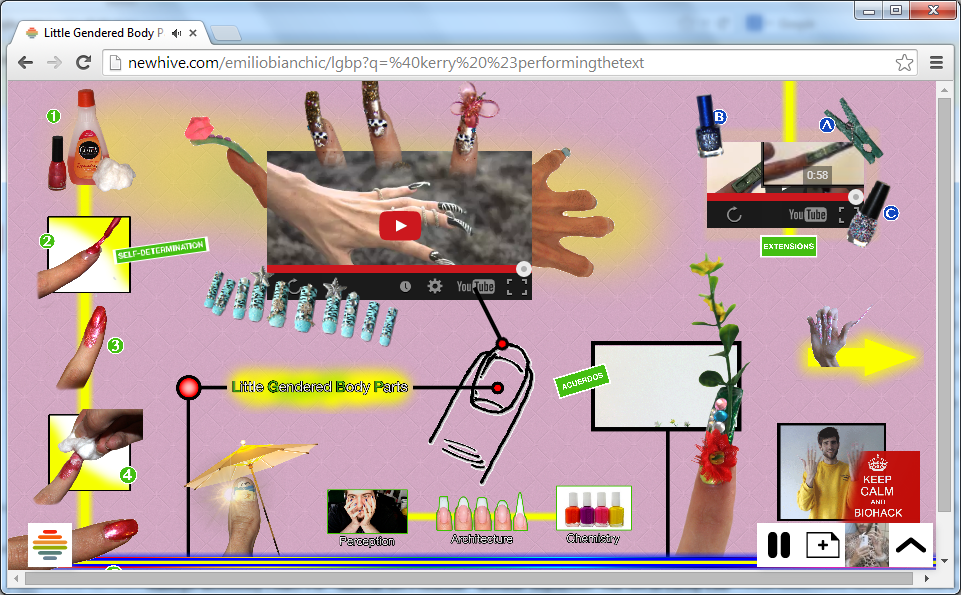
Screengrab from Martine Syms's Nite Life (2015)
"Don't you believe me?" "Huh?" "What's wrong with me?" "Somebody…" "You know what I'm saying?"
Asks Martine Syms's Nite Life. These texts appear through an invisible cursor on a purple backdrop, mimicking the rhythm of a nervous diction before quickly deleting themselves. Some level of interaction seems to be expected, but there is no way to reply—in contrast with Syms's recent project with Gina Trapani for Seven on Seven, Insecurity Questions.
The website's performance of these words—which Syms culled from Sam Cooke's asides to the audience on the record Live at the Harlem Square Club, 1963—is diametrically opposed to the bravado we often associate with recordings like "A Change is Going to Come" or with Cooke's voice in general. Even after successfully crossing over from Gospel to Pop (a transition that included a comparatively restrained appearance on Ed Sullivan), Cooke's live performances were characterized by their energy and the intensity of the audience's interaction. These characteristics resulted in executives deeming this live recording “too black" to be released; the recording did not see the light of day until Cooke's style was no longer in vogue.
Presented on the NewHive web authoring platform as part of the online exhibition "/Performing the Text," curated by Kerry Doran, Nite Life conveys a level of intimacy on NewHive unlike previous iterations of this work, which included a commercial banner and a performative lecture. Unlike the symbiosis between performer and audience in the recording, Syms's edits of the text for her NewHive work reify the roles of speaker and listener; the text renders Cooke's lead-in to the song "Feel It," "Don't fight it. We going to feel it," as simply, "Don't fight it," omitting the moment of a unified subject. Where Cooke on the live recording is charged and assured by the audience, the speaker in Syms's text seems confused and emotionally raw, perhaps like a self-conscious teenager composing something, unsure of a reply. Once the speaker and audience are no longer present, the questions asked in the piece become fragile in a way that signals alienation rather than community.
Though the three works in "/Performing the Text" are visually diverse, they share a concern with the manner in which text and language encode the body. Emilio Bianchic's Little Gendered Body Parts juxtaposes glamorous .gifs with incredibly personal interviews with members of a private Nail Art group of which the artist is a part. Bianchic's use of NewHive differs from most in that it places emphasis on a larger online collaborative or community rather than a stand-alone creator, making it one of the more successful I've seen. The show also includes echo echo by the poet Kalliopi Mathios, in which lines of a poem play over one another as the user's cursor moves over images of motion sensors.

Screengrab from Emilio Bianchic's Little Gendered Body Parts (2015)
"/Performing the Text" is currently up at NewHive.
Kerry Doran is a writer, curator, and artist based in New York. She has written for Rhizome, Postmasters Gallery, and the Research Forum at the Courtauld Institute of Art, London. Currently, she is researching and archiving David Diao’s oeuvre for his upcoming solo exhibition at the Ullens Center for Contemporary Art, Beijing, and contributing writings to the exhibition catalogue.

